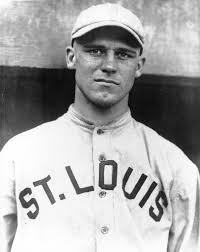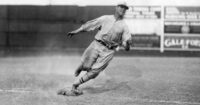Inductees
George Sisler

March 24, 1893—March 26, 1973
" [Sisler] was the smartest hitter who ever lived. He was a professional with the bat in his hands. He never stopped thinking ... In the field, he was the acme of grace and fluency." - Branch Rickey
George Sisler was highly thought of as both a person and a ballplayer during his day. A five-tool player before the term came into vogue, Sisler finished his career as one of the game’s greatest hitters.
After graduating with a mechanical engineering degree from the University of Michigan in 1915, a rarity for ball-players at the time, Sisler moved right onto the roster of the St. Louis Browns. Starting his career as a pitcher, he eventually became a first baseman to get his powerful left-handed bat in the everyday lineup.
Peerless defensively at first, Sisler also excelled with his 42-ounce bat in hand. In a big league career that lasted 15 seasons, “Gorgeous George” batted over .300 13 times, including league-leading averages of .407 in 1920 and .420 in 1922. His 257 hits during the 1920 campaign remained a modern major league record until Seattle’s Ichiro Suzuki broke it in 2004. He also led the league in stolen bases four times as a skilled base runner.
Baseball great Ty Cobb, an American League rival for many years, once called Sisler “the nearest thing to a perfect ballplayer” he had ever seen.
Sisler claimed that being once a pitcher helped make him a better hitter. “I used to stand on the mound myself, study the batter, and wonder how I could fool him,” he said. “Now when I am at the plate, I can more easily place myself in the pitcher’s position and figure what is passing through his mind.”
At the height of his success as a baseball player, though, he missed the entire 1923 season due to a sinus infection that produced double vision. He would come back to play another seven seasons, hitting .320 during that span, but even he would acknowledge he was never quite the same hitter.
Ending his career with 2,812 hits and a .340 batting average, Sisler was inducted into the Baseball Hall of Fame in 1939. However, because he often played on second-division teams and never had the national stage of a World Series, he was reserved and much less flamboyant than fellow stars of the time like Babe Ruth and Ty Cobb, and as a first baseman, was overshadowed by the enormity of Lou Gehrig.
